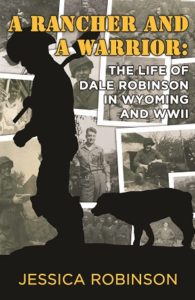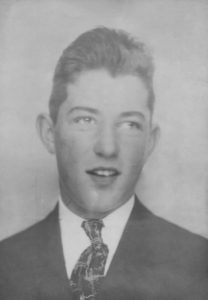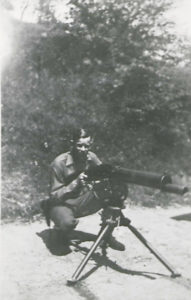Mrs. Hemingway — by Naomi Wood
Ernest Hemingway maintained that the mark of a good writer was the ability to focus on key details, those unique, perhaps evocative, observations that would stand out and render each scene more memorable. (For example, Hemingway’s reference to the ‘clean whiteness of the thigh bone’ in his description of the wounded matador —page 20 of Death in the Afternoon, later recalled in Ernest Hemingway on Writing, edited by Larry W. Phillips). In her enchanting and highly readable novel, Mrs. Hemingway, author Naomi Wood puts Hemingway’s dictum into practice. The novel is dotted with little gems of description. Examples from Mrs. Hemingway include the ‘dusty mule sausages’ when referencing the Spanish Civil War, how ‘green light filters through’ the opened bottle of champagne in Hemingway’s room at the Paris Ritz, and how Hemingway’s last wife, forced to improvise when applying her make-up in wartime London, had ‘worked up burnt cork with some water for her lashes.’
Hemingway believed that, to be a writer, one had to live the ‘writer’s life,’ meaning, for him as a man, one had to go to war, to attend bull fights, to box, and to drink large amounts of alcohol. He had four wives in total and, despite the title of Naomi Wood’s Mrs. Hemingway being in the singular, the novel spans all four: Hadley (‘The Paris Wife’ and mother of Bumby), Fife (the writer for Vogue whose real name was Pauline; she showed up in Paris and stole Ernest away), Martha Gellhorn (the war correspondent from both the Spanish war and World War II), and Mary (the American journalist who, like Martha, had experienced the war in Europe).
Naomi Wood leaves no alleyway unexplored: the salon of Gertrude Stein, for example, or the bookstore, Shakespeare and Company, beloved not only of Hemingway but also of writers such as James Joyce and F. Scott Fitzgerald. Wood leaves no stone unturned, notably the issue of Hemingway’s suicide. She covers locations—Paris, Key West, Cuba, Idaho—in order, and the reader experiences the great writer from the point of view of each wife, in turn. Wood’s novel will delight fans and would also be an interesting introduction to Hemingway for those who have never read his work.
 A Rancher and a Warrior: The life of Dale Robinson in Wyoming and WWII
A Rancher and a Warrior: The life of Dale Robinson in Wyoming and WWII
— by Jessica Robinson
In her book A Rancher and a Warrior: The life of Dale Robinson in Wyoming and WWII, Jessica Robinson describes the life of her grandfather-in-law, as a cattle rancher in Wyoming and as a soldier during World War II. Photographs, both of Dale and of the early days of ranching in Wyoming, abound throughout the book.
Born on 4 June 1925 on a ranch in Wyoming, Dale was raised in the rural way of life. It was the only way of life he believed to be worth living. Wyoming, at the time, was the least populated state in the USA.
By the time he was 10, he was working as a cook’s assistant at a local pig farm. By the time he was 16, the United States was plunged into war by the surprise attack on Pearl Harbor by the Japanese. Dale’s brother was already in the navy but Dale had to bide his time before he could enlist. To complicate matters, he was employed in agriculture and hence his services were valuable at home. Dale removed the complication by training as a welder.He was barely 18 when he joined the US Army: 313th Infantry, Company H. A Rancher and a Warrior describes basic training in Oklahoma, from handling haircuts to handling the Browning M2HB. Dale trained as a heavy machine gunner.
Dale had been transferred to the 79th Reconnaissance Troop by the time he left for New York City and boarded the British luxury liner, RMS Strathmore, for the voyage to Greenock, Scotland. More training, then France. Crammed with his fellow soldiers in a landing craft, Dale landed on Utah Beach in Normandy a few days after D-Day and was in action a few days later. He took part in the recapturing the French city of Cherbourg, which would become an important port for supplying the Allied Expeditionary Force.
Readers wanting to know more about the Normandy landings will find the section on the hedgerow countryside of Normandy and digging foxholes for the night quite fascinating, as well as the reaction of French civilians, greeting their liberators with cider and aprons full of apples. As expected, casualties among the troops were heavy and new replacements arrived each night. “Sadly, most of them were gone before he [Dale] even learned their first names.”During Hitler’s Ardennes offensive, the Battle of the Bulge, Dale found himself fighting in the middle of winter, using his raincoat as a blanket and a tent, and enduring ice and frost when he woke each morning. A shell wound left him with pieces of shrapnel in his thigh that were never taken out.
After VE-Day, he was posted to Czechoslovakia rather than the Pacific. After that, and after three years in the army, Dale was posted home.
Marriage with childhood friend Jayne, then children and the fulfillment of Dale’s dream of ranching fill the remaining pages. Anyone interested in a window into the life of a country boy who became a soldier and a soldier who became a rancher and a family man will find this biography enlightening and enjoyable; the personal details and the copious illustrations—old photographs and drawing from World War II—make it so. Dale received the Silver Star and also the British Military Medal, the latter being presented in person by Field Marshal Montgomery. The start of the citation reads:
‘For gallantry in action against the enemy on 23 October 1944, in France. During a strong enemy counter-attack, Sergeant Robinson and his heavy machine gun crew were in a concealed position, helping to defend friendly territory. Noting an enemy armored vehicle approaching from the flank, Sergeant Robinson ordered the remainder of the squad to remain in place while he and his gunner (who volunteered) left their concealed position to take up one completely exposed to the enemy. Here they engaged the enemy vehicle in a point-blank duel . . .’
![Le Vol du Corbeau (The Flight of the Raven)-----by Jean-Pierre Gibrat (Aire Libre Dupuis, 2002) [Photograph by Edith-Mary Smith]](https://secondbysecondworldwar.com/wp-content/uploads/2015/01/Wgibrat11-e1422330645826-228x300.jpg)
Le Vol du Corbeau (The Flight of the Raven)—–by Jean-Pierre Gibrat (Aire Libre Dupuis, 2002) [Photograph by Edith-Mary Smith]
One day, if I write a spy story in Nazi-occupied Paris, with a bright young heroine named . . . maybe her name doesn’t matter, but I would definitely write a scene where she escapes over the rooftops exactly as Jean-Pierre Gibrat’s heroine, Jeanne Cadrieux, does in Gibrat’s two-volume bande dessinnée titled Le Vol du Corbeau (The Flight of the Raven) [Aire Libre Dupuis, 2002]. By the way, Le Vol du Corbeau is a sequel to Gibrat’s, Le Sursis, which tells the story of Jeanne’s sister, Cécile.
Jeanne is shown on the cover of Volume 1 of Le Vol du Corbeau, clinging perilously to the side of a building, high above Paris. (Those white gloves will get awfully dirty, Jeanne!)
Gibrat is the unquestioned master of setting. Volume 1 of Le Vol du Corbeau takes place mostly on the rooftops, among the chimney breasts of Paris’s ubiquitous Mansard roofs. Volume 2 is set largely on the river, aboard one of the Parisian barges that sail up and down the Seine.
The story in a nutshell:
Volume 1 of Le Vol du Corbeau begins with Jeanne in jail. She has been reported for black market (marché noir) activities and the police have searched her apartment and have discovered a cache of weapons. Jeanne is working for the French Resistance.
While the local police chief ponders whether or not to hand her over to the Gestapo, a burglar named François Michaud is tossed into Jeanne’s cell. François helps her to escape and the two of them flee over the rooftops.
François then takes her to his friends, who own a barge. They sail away from Paris.
Complication of Volume 2: A German soldier is stationed on board the barge. Further complication: Jeanne shoots him when he tries to force himself upon her. What to do with the body?
It is never good to tell an ending. Please read the book. It is well worth it. [Only available in French, I believe.] Those who would like to see Jeanne and her sister, Cécile, reunited will not be disappointed, neither will those who would like to see Jeanne and François become lovers.
![And Some Fell on Stony Ground: A Day in the Life of an RAF Bomber Pilot, A Fictional Memoir by Leslie Mann (Icon Books in Association with Imperial War Museums, 2014) [Photograph by Edith-Mary Smith]](https://secondbysecondworldwar.com/wp-content/uploads/2014/10/AndSomeFell1-e1413754362680-195x300.jpg)
And Some Fell on Stony Ground: A Day in the Life of an RAF Bomber Pilot, A Fictional Memoir by Leslie Mann (Icon Books in Association with Imperial War Museums, 2014) [Photograph by Edith-Mary Smith]
Their country was likely doomed and within the month, or several months at most, they would almost certainly be dead. And still they volunteered. In the early days of the Second World War, the young men of Britain’s RAF Bomber Command took to the skies in obsolete aircraft and, night after night, flew out over Germany and Nazi-occupied Europe. The damage they inflicted was insignificant. They message they delivered was monumental: It told the enemy and the neutral countries of the world and also those countries of Europe that had succumbed to Hitler’s Blitzkrieg that Britain was still in the fight and was striking back.
In 1941, Flight Sergeant Leslie Mann was such a young man. He was a tail gunner in an Armstrong Whitworth Whitley twin-engine bomber. The Whitleys were awkward-looking planes that were out-of-date before the war had even started. They had none of the caché of the later Wellingtons or the fame of the Lancasters, Halifaxes, and Stirlings that were to put in solid service nearer to the end of World War II. Leslie Mann’s plane was shot down over Dusseldorf and, after the war ended, he described his experiences in a fictional memoir that remained unpublished until 2014: And Some Fell on Stony Ground:A Day in the Life of an RAF Bomber Pilot—A Fictional Memoir by Leslie Mann (Icon Books in Association with Imperial War Museums, 2014). British historian Richard Overy has written a masterful introduction.
A series of striking photographs add value to the book and reveal that author was an eye-catchingly handsome man, even Clark-Gable handsome. His text dispels, in the first few pages, the fiction of the glamour of war. Leslie Mann’s book is about the everydayness of war, the drudgery of war, the routine, the cold, the exhaustion, the moments of terror, the fear of disfigurement. ‘The sky could kill him whenever it wanted to,’ muses Pilot Officer Mason, who is Mann’s fictional hero (or anti-hero, as Richard Overy shrewdly puts it).
The book has its touching moments: the scene at the shop where the woman behind the counter takes pity on Mason and sells him a pack of ‘under-the-counter’ cigarettes, or at the dance when Mason notices the ‘girl in green’ but sees no point in pursuing her, realizing that he does not have the luxury of a future.
Descriptions are sometimes whimsical, like that of Mason’s buddy, Simpson: ‘He had those funny shaped eyebrows that made him look perpetually worried. And enormous feet.’ When a ‘first-tripper’ asks Mason what it will be like to fly on a mission, words such as ‘sickening,’ ‘bloody awful,’ and ‘fatal’ flash through Mason’s brain. Eventually, he just says, “Oh, not so bad. A bit shaky sometimes.”
Above all, the book is marked by its realism, the fiery crash that kills Mason’s friend, Ken, the nightmarish take-off and engine trouble that caused Mason’s plane to turn back and crash-land near the Pennines, the attack on the German oil refinery ‘…the aircraft stalled and hung in mid-air, then lurched horribly…’—all authentically described by a man who was actually there.



